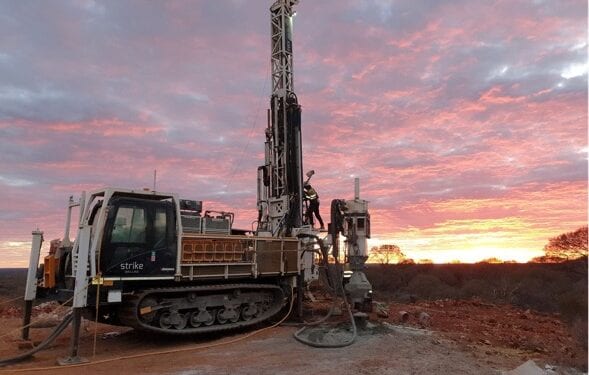Set To Resume Drilling At Promising Mt Alexander Project
St George Mining Limited (ASX: SGQ) is start to start drilling this week with the launch of a multi-faceted exploration campaign at its flagship high-grade Mt Alexander Project, located in the north-eastern Goldfields of Western Australia.
Executive Chairman,John Prineas,said the 4,000m plus diamond drill programme will investigate multiple new electromagnetic (EM) conductors identified from recent downhole EM (DHEM) surveys.
“We are very excited to be resuming diamond drilling at Mt Alexander this week. The very strong EM conductors that will be drilled are outstanding targets for massive sulphide mineralisation,” Mr Prineas said.
“We have never had a false positive EM reading at the Cathedrals Belt with all conductors of this kind drilled being confirmed as nickel-copper sulphides.
“The new conductors are located approximately 500m to 800m north-west of known massive sulphides in the Cathedrals Belt and are the deepest conductors identified in the Belt.
“The discovery of new nickel-copper sulphide deposits in these locations would be a major success in our ongoing exploration at Mt Alexander and significantly expand the potential footprint of high-grade mineralisation at the Project.
“We are also excited about activities planned across the wider tenement package at Mt Alexander. These areas are either underexplored or unexplored and offer an excellent opportunity to add to the exploration success we have already achieved at the Cathedrals Belt.
“As the nickel price reaches a 10-year high, St George is well positioned to deliver significant shareholder value through its ongoing exploration and development programmes at Mt Alexander.
“With high-grade nickel-copper-cobalt-PGEs at Mt Alexander commencing 30m from surface, a large underexplored mineral system and a location in an established mining region of Western Australia – in the backyard of major mining companies – our Project commands unique attention amongst its peers.”
DHEM surveys on the deeper drill holes completed last year identified 11 off-hole EM anomalies.
The highest priority targets were identified from DHEM surveys in MAD185 and MAD192. Each of these holes intersected thick mafic-ultramafic units with disseminated nickel-copper sulphides – indicative of a fertile intrusive structure with prospectivity for higher grade mineralisation proximal to the hole.
Five off-hole EM anomalies were identified from the DHEM survey in MAD185. Two of these are modelled with EM plates that have very strong conductivity of 33,100 Siemens and 14,225 Siemens, respectively.
The DHEM survey in MAD192 identified two off-hole anomalies that have been modelled as EM plates with very strong conductivity of 55,550 Siemens and 26,000 Siemens, respectively.
These powerful off-hole conductors are interpreted to have a massive sulphide source and will be the first conductors to be drilled in this year’s exploration campaign.












